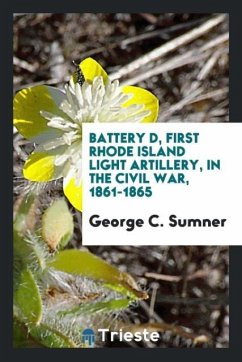"History of the Second Massachusetts Battery, (Nims' Battery), of Light Artillery, 1861-1865" by Caroline E. Whitcomb offers a detailed account of the Second Massachusetts Battery's service during the American Civil War. This meticulously researched historical text chronicles the experiences of the unit, also known as Nims' Battery, within the United States Army. Readers interested in military history and the role of artillery in the Civil War will find this work invaluable. It provides insight into the daily lives, challenges, and contributions of the Massachusetts Artillery. Whitcomb's historical narrative captures a crucial period in United States history, offering a timeless perspective on the events that shaped the nation. This book serves as a vital resource for understanding the experiences of soldiers during this pivotal conflict. This work has been selected by scholars as being culturally important, and is part of the knowledge base of civilization as we know it. This work is in the public domain in the United States of America, and possibly other nations. Within the United States, you may freely copy and distribute this work, as no entity (individual or corporate) has a copyright on the body of the work. Scholars believe, and we concur, that this work is important enough to be preserved, reproduced, and made generally available to the public. We appreciate your support of the preservation process, and thank you for being an important part of keeping this knowledge alive and relevant.
Bitte wählen Sie Ihr Anliegen aus.
Rechnungen
Retourenschein anfordern
Bestellstatus
Storno









